To begin with, I agree with @df778899 the solution he provides is a robust solution. Although,I will give you an alternative choice if you don't want to work with spring framework and you want to dig it further.
Interceptors provide a powerful and flexible design include invocation monitoring, logging, and message routing. In some sense, the key value you are looking is a kind of RMI-level AOP (aspect-oriented programming) support
Generally speaking:
it is not fair to ask RMI to directly support such capabilities as it
is only a basic remote method invocation primitive, while CORBA ORB is
at a layer close to what the J2EE EJB (Enterprise JavaBean) container
offers. In the CORBA specification, service context is directly
supported at the IIOP level (GIOP, or General Inter-Orb Protocol) and
integrated with the ORB runtime. However, for RMI/IIOP, it is not easy
for applications to utilize the underlying IIOP service-context
support, even when the protocol layer does have such support. At the
same time, such support is not available when RMI/JRMP (Java Remote
Method Protocol) is used. As a result, for RMI-based distributed
applications that do not use, or do not have to use, an ORB or EJB
container environment, the lack of such capabilities limits the
available design choices, especially when existing applications must
be extended to support new infrastructure-level functions. Modifying
existing RMI interfaces often proves undesirable due to the
dependencies between components and the huge impact to client-side
applications. The observation of this RMI limitation leads to the
generic solution that I describe in this article
Despite all the above
The solution is based on Java reflection techniques and some common
methods for implementing interceptors. More importantly, it defines an
architecture that can be easily integrated into any RMI-based
distributed application design.
The solution below is demonstrated through an example implementation that supports the transparent passing of transaction-context data, such as a transaction ID (xid), with RMI. The solution contains the following three important components:
- RMI remote interface naming-function encapsulation and interceptor plug-in
- Service-context propagation mechanism and server-side interface support
- Service-context data structure and transaction-context propagation support

The implementation assumes that RMI/IIOP is used. However, it by no
means implies that this solution is only for RMI/IIOP. In fact, either
RMI/JRMP or RMI/IIOP can be used as the underlying RMI environments,
or even a hybrid of the two environments if the naming service
supports both
Naming-function encapsulation
First we encapsulate the naming function that provides the RMI remote
interface lookup, allowing interceptors to be transparently plugged
in. Such an encapsulation is always desirable and can always be found
in most RMI-based applications. The underlying naming resolution
mechanism is not a concern here; it can be anything that supports JNDI
(Java Naming and Directory Interface). In this example, to make the
code more illustrative, we assume all server-side remote RMI
interfaces inherit from a mark remote interface ServiceInterface,
which itself inherits from the Java RMI Remote interface. Figure
shows the class diagram, which is followed by code snippets that I
will describe further

RMI invocation interceptor
To enable the invocation interceptor, the original RMI stub reference
acquired from the RMI naming service must be wrapped by a local proxy.
To provide a generic implementation, such a proxy is realized using a
Java dynamic proxy API. In the runtime, a proxy instance is created;
it implements the same ServiceInterface RMI interface as the wrapped
stub reference. Any invocation will be delegated to the stub
eventually after first being processed by the interceptor. A simple
implementation of an RMI interceptor factory follows the class diagram
shown in Figure

package rmicontext.interceptor;
public interface ServiceInterfaceInterceptorFactoryInterface {
ServiceInterface newInterceptor(ServiceInterface serviceStub, Class serviceInterfaceClass) throws Exception;
}
package rmicontext.interceptor;
public class ServiceInterfaceInterceptorFactory
implements ServiceInterfaceInterceptorFactoryInterface {
public ServiceInterface newInterceptor(ServiceInterface serviceStub, Class serviceInterfaceClass)
throws Exception {
ServiceInterface interceptor = (ServiceInterface)
Proxy.newProxyInstance(serviceInterfaceClass.getClassLoader(),
new Class[]{serviceInterfaceClass},
new ServiceContextPropagationInterceptor(serviceStub)); // ClassCastException
return interceptor;
}
}
package rmicontext.interceptor;
public class ServiceContextPropagationInterceptor
implements InvocationHandler {
/**
* The delegation stub reference of the original service interface.
*/
private ServiceInterface serviceStub;
/**
* The delegation stub reference of the service interceptor remote interface.
*/
private ServiceInterceptorRemoteInterface interceptorRemote;
/**
* Constructor.
*
* @param serviceStub The delegation target RMI reference
* @throws ClassCastException as a specified uncaught exception
*/
public ServiceContextPropagationInterceptor(ServiceInterface serviceStub)
throws ClassCastException {
this.serviceStub = serviceStub;
interceptorRemote = (ServiceInterceptorRemoteInterface)
PortableRemoteObject.narrow(serviceStub, ServiceInterceptorRemoteInterface.class);
}
public Object invoke(Object proxy, Method m, Object[] args)
throws Throwable {
// Skip it for now ...
}
}
To complete the ServiceManager class, a simple interface proxy cache is implemented:
package rmicontext.service;
public class ServiceManager
implements ServiceManagerInterface {
/**
* The interceptor stub reference cache.
* <br><br>
* The key is the specific serviceInterface sub-class and the value is the interceptor stub reference.
*/
private transient HashMap serviceInterfaceInterceptorMap = new HashMap();
/**
* Gets a reference to a service interface.
*
* @param serviceInterfaceClassName The full class name of the requested interface
* @return selected service interface
*/
public ServiceInterface getServiceInterface(String serviceInterfaceClassName) {
// The actual naming lookup is skipped here.
ServiceInterface serviceInterface = ...;
synchronized (serviceInterfaceInterceptorMap) {
if (serviceInterfaceInterceptorMap.containsKey(serviceInterfaceClassName)) {
WeakReference ref = (WeakReference) serviceInterfaceInterceptorMap.get(serviceInterfaceClassName);
if (ref.get() != null) {
return (ServiceInterface) ref.get();
}
}
try {
Class serviceInterfaceClass = Class.forName(serviceInterfaceClassName);
ServiceInterface serviceStub =
(ServiceInterface) PortableRemoteObject.narrow(serviceInterface, serviceInterfaceClass);
ServiceInterfaceInterceptorFactoryInterface factory = ServiceInterfaceInterceptorFactory.getInstance();
ServiceInterface serviceInterceptor =
factory.newInterceptor(serviceStub, serviceInterfaceClass);
WeakReference ref = new WeakReference(serviceInterceptor);
serviceInterfaceInterceptorMap.put(serviceInterfaceClassName, ref);
return serviceInterceptor;
} catch (Exception ex) {
return serviceInterface; // no interceptor
}
}
}
}
You can find more details in the following guideline here. It is important to understand all this above if you desire to make it from scratch, in contrast with Spring-AOP Framework robust solution.In addition,I think you will find very interesting the Spring Framework plain source code for implementing an RmiClientInterceptor. Take another look here also.


